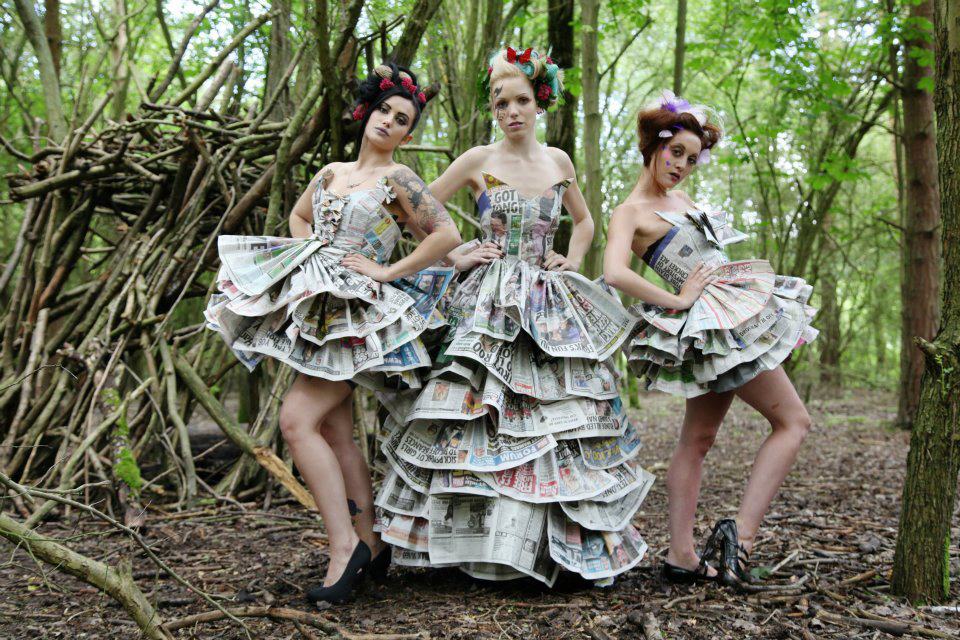

It’s a well-established stereotype that women love shopping. ‘Retail therapy’ has become a regular pick-me-up, as few can deny the feel-good factor of purchasing a new outfit. Unfortunately, the environmental impact of this ‘fast fashion’ shopping boom is immense. A study by WRAP showed that in the United Kingdom alone, consumers have approximately £30 billion (43.5 billion francs) worth of unworn clothing hanging neatly in their closets. This overconsumption of ‘fast fashion’ eventually leads to an estimated £140 million (roughly 200 million francs) of clothing ending up in landfills each year. The UK is but one country in this wide world, which means that the fast fashion trend is having alarming effects on the planet worldwide.
10 times more energy is needed to produce a ton of textiles than to produce a ton of glass
But what makes the fashion industry such a damaging industry? Certainly, overconsumption plays a part, since the majority of used clothing cannot be resold once discarded. However, this is not the most responsible culprit. Huge amounts of energy, natural resources and toxic chemicals are used to produce many of the clothes widely available today, as many production techniques are out-of-date and in need of a makeover. 10 times more energy is needed to produce a ton of textiles than to produce a ton of glass and the US textile industry has the 5th highest CO2 emissions in the country. Astronomical amounts of water are also used in growing cotton and in dyeing processes; with a single mill in China using 200 tons of water for each ton of fabric it dyes. China produces most of the world’s jeans and the impact can be seen, as the Pearl River’s water literally runs blue with dye. At the same time, this is only a fraction of the 2.5 billion tons of wastewater the country produces yearly as a result of the textile industry. Back in the UK, the global water footprint of a single household’s clothing exceeds 200,000 litres a year. In other words, it’s enough water to fill 1,000 standard bathtubs to capacity.
Coop claims to be the largest retailer of fair-trade, organic clothing worldwide

China's Pearl River runs blue from denim factory wastewater.
Luckily, all hope is not lost. Many eco-friendly alternatives to this wasteful fashion movement exist and popular retailers like H&M and Levi’s are catching on. In 2010, the textile and clothing industry was worth close to 2,386 trillion francs worldwide. 5 billion of this figure was contributed to by organically grown cotton, which displays consumer and retailers’ willingness to make a positive change. In Switzerland, many of the most influential retailers are opting for more environmental alternatives. Both Migros and Coop have organic and fair-trade cotton products, with each brand developing their own organic lines. Coop even claims to be the largest retailer of fair-trade, organic clothing worldwide, with 440 products available. Swiss sportswear brand Switcher has also devoted itself to sustainable apparel since the Rio Earth Summit in 1992. While they still use non-organic fibres, large strides are being made. At least 16% of the cotton Switcher uses is organically certified, 4.5% is fair-trade certified and they manage to remain CO2 neutral. They also employ PET recycled material when possible.
Ordinary cotton is the most pesticide-intensive crop in the world
Unfortunately, organic cotton is not a cure-all. Ordinary cotton is the most pesticide-intensive crop in the world and while organic cotton eliminates the need for these pesticides, it may result in more water usage and often needs to be shipped over greater distances. Another drawback is that different brands may have different definitions of the word ‘organic.’ Oftentimes, the cotton will later be dyed and treated with toxic chemicals and metals. For organic cotton to be truly ‘green’ it must be rain-fed and locally sourced and processed. Similarly, bamboo may be eco-friendly to grow, but converting it into fabric is generally not. These variations make it difficult to calculate the overall impact of each fabric; however, new dyeing methods are much easier to measure and are quite the fashion.
New processes are emerging
One new technique developed in the United States is AirDye, a pioneering one-step approach that heat-transfers patterns from paper to fabric. This process can save between 12 and 128 litres of water per kilogram of fabric, as well as cutting back on harmful by-products and energy usage (by a staggering 85%). Design team Costello Tagliapietra and Gretchen Jones are already utilising AirDye for their collections. Another popular method is digital printing, which entails directly applying prints to fabrics through the use of a printer. This procedure reduces energy usage by 75% and water usage by 95% as well as minimising textile waste. Many top brands like Alexander McQueen, Mary Katrantzou and Basso & Brooke all employ digital printing.
Another mode of reducing production materials is to make only the amount of fabric necessary for a garment. In ordinary garment production, small unusable slivers of textiles are constantly discarded, creating mountains of waste. Siddhartha Upadyaya, an Indian designer of the eco-friendly brand August Fashion, invented the Direct Panel on Loom (DPOL) technology which only produces the amount of fabric necessary for each garment. It increases fabric efficiency by 15% because no fabric waste is created. This unique technology uses a loom attached to a computer and weaves individual sections of a garment which are then sewn together. Weaving, fabric cutting and patterning are thus all rolled into one. The final product is a quality material that not only avoids creating leftover textiles, but also saves 70-80% more water than the standard methods of production.
The upcycling trend
Another one of the fastest-growing fashions in eco-friendly clothing is upcycling, a method of creating sustainable apparel by converting old materials into new clothing. One example is SputnikZurich, a new and innovative Swiss brand, creating urban street wear and statement messenger bags from the recycled neon safety vests of construction workers. Their motto ‘Show Yourself, Be Yourself, Be Visible’ is reflective of their intention. The highly noticeable materials are turned into pieces that people might actually want to be seen wearing. “Zurich's transportation system is a dense network of trams, buses, cars, mopeds, and bikes intertwining and overlapping with pedestrian routes,” SputnikZurich’s founders write. “Being seen on the street protects YOU and opens you up for social encounters.” Other examples of upcycling include food being manufactured into material. In Germany, Anke Domaske has created a fibre from milk, known as QMilch, and in London, designer Suzanne Lee has found a way to produce fabric and ‘vegetable leather’ out of fermented tea.
Big corporations are also banking on upcycling. In Spring of 2013, Levi’s launched their Waste Less collection for both men and women, incorporating 20% post-consumer recycled content. Each pair of jeans contained approximately eight 12 to 20-ounce (35 cl to 59 cl) soda bottles. Levi’s has had numerous green campaigns in the past, including their organic and Water Less jeans campaigns (which reduced the company’s water usage by 172 million litres), and other companies are following suit. For instance, the jeans brand I Am Not A Virgin uses a mixture of 25% bottle fibre and 75% cotton in all of their denim.
While customers worldwide are still over-consuming and fashion labels are still over-producing, the new consciousness of the ‘slow fashion’ movement is gaining momentum. According to Elizabeth Cline, author of Overdressed: The Shockingly High Cost of Cheap Fashion, “Slow fashion encompasses sustainable fashion, but it takes a broader view than just supporting organic T-shirts.” It takes a look at “the whole cycle.” By purchasing products made from recycled materials and organic fibres that create less waste in the fabrication process, use less energy and water in the dyeing procedure and are tailored to fit, the environmental impact of the fashion industry can be dramatically reduced. Luckily, these trends are in season and won’t be going out of fashion anytime soon.
Sources :
Treehugger.com, Fashionista.com, Care2.com, Shirahime.ch
Photo credit : Fashionindustrynetwork.com and Google via Greenpeace.org